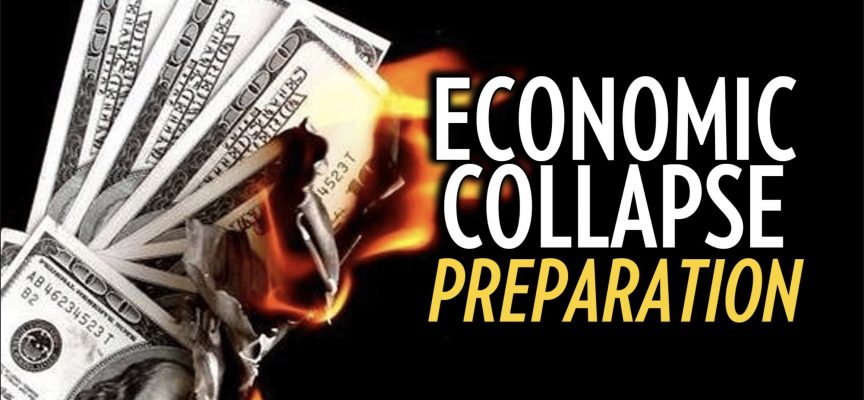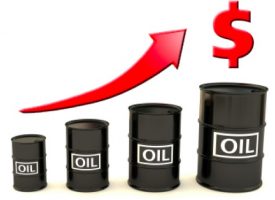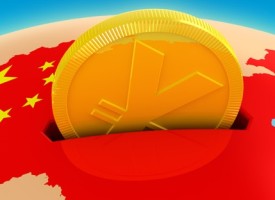The U.S. will see enormous economic destruction in 2-22 as dragflation implodes the economy.
Commodities Supercycle Will Accelerate Demand Destruction
March 16 (King World News) – Gerald Celente: Goldman Sachs analysts see the U.S. economy growing by 1.75 percent from 2021’s fourth quarter through this year’s third quarter, down from 2 percent they had foreseen earlier.
The chances of a recession this year have grown as high as 35 percent, which is “currently implied by models,” they added.
The yield curve for U.S. treasury bills is nearing an inversion, a case in which short-term interest rates are higher than longer-term yields. An inversion in the curve has often preceded an economic downturn.
The curve inverted in 2007, presaging the Great Recession, and again in 2019 as the economy was falling into the COVID-inspired shutdown.
Typically, the yield curve’s spread between the two interest rates is at least 0.5; in April 2021, it was 1.5. The spread began this year at 0.89 but on Monday this week, it had fallen to 0.28, with 10-year notes yielding 2.1 percent to the two-year notes’ 1.82 percent.
“Over time, the three biggest factors that tend to drive the U.S. economy into a recession are an inverted yield curve, some kind of commodity price shock, or Fed tightening [monetary policy],” Ned Clissold, chief strategist at Ned Davis Research, told Bloomberg.
“Right now, there appears to be a potential for all three to happen at the same time,” he said…
Billionaire Eric Sprott bought a 20% stake in a mining company
that is preparing to announce a massive silver resource
to find out which one click here or on the image below

Commodities Supercycle
Before this week’s sharp drop, oil prices climbed as high as 40 percent in the first 10 weeks of this year, adding to the commodities supercycle that we foresaw in “Commodities Supercycle Underway?” (11 May 2021), and the U.S. Federal Reserve is poised to tighten interest rates this week.
The economic damage added by the Ukraine war has put “stagflationary” pressure on the U.S. economy and that of its allies, Mohamed El-Erian, chief economic advisor to the Allianz financial services firm, said in a 7 March statement quoted by Business Insider.
“Economic consequences of the war will not be confined to the countries fighting it,” he said.
“Existing inflationary pressures will be compounded by the surging prices of commodities, including energy and wheat,” supply chains that are once again disrupted, and higher transport costs, he added.
U.S. markets tend to weaken about seven months ahead of the economy formally entering a recession, according to Bloomberg, and bottom five months before a recession is officially declared over.
When recession strikes, “consumers typically go for little pleasures,” Ed Shing, chief investment officer at BNP Paribas Wealth Management, said to Bloomberg.
New Cars & Smartphones Suffer, Booze & Chocolates Benefit
“Buying new cars and smartphones suffer, while booze and chocolates tend to benefit,” he pointed out.
The U.S. will fare better than Europe, which will fall into recession, El-Erian predicted, adding that Russia’s economy will shrink by a third this year.
“Even if the war ended tomorrow, it would take years for these economies to recover,” he warned, “and the longer the war continues, the greater the damage and the deeper the consequences.”
TREND FORECAST: Expect Dragflation Nightmare
Again, we disagree. It will not be stagflation—stagnant economy and rising inflation. It will be Dragflation, economies shrink as prices rise. We see the signs of this already in place: wages must remain high to hold good workers in a tight job market, the price of commodities and inflation are soaring, and the U.S. Federal Reserve will not raise interest rates high enough or quickly enough to rein in rising prices.
Also, as we noted in “West Paralyzes Russian Economy and West’s Economy is Paying the Price” (8 Mar 2022) and in other articles, sanctions on Russia will wreak significant damage on Western economies that will continue to worsen inflation and render the U.S. Federal Reserve even more powerless to tame rising prices.
Thus the real danger to the U.S. and other Western economies is not stagflation, but Dragflation, one of our Top 2022 Trends.
As prices rise beyond consumers’ and producers’ ability to afford them, economies experience “demand destruction,” the slashing of demand, which we noted in “Commodity Prices Show Biggest Weekly Rise Since 1974” (8 Mar 2022). In consumer-driven economies, that leads to economic contraction—a recession—as prices continue to rise.
And because the odds of a U.S. recession are rising, we see a growing likelihood that the U.S. economy will enter Dragflation by the end of this year.
ALSO RELEASED: “Made In America” Making A Comeback CLICK HERE.
ALSO RELEASED: INFLATION NIGHTMARE CONTINUES: Despite Takedown, Gold, Silver And Mining Stocks Set To Explode Higher CLICK HERE.
ALSO RELEASED: The Perfect Storm For Gold Has Arrived And Paper Games On COMEX Won’t Stop It CLICK HERE.
ALSO RELEASED: SILVER TO BREAK $50 IN 2022: Things Are About To Radically Change In The Silver Market CLICK HERE.
ALSO RELEASED: War In Ukraine Or Not, Gold Will Dramatically Outperform Financial Assets CLICK HERE.
To listen to Egon von Greyerz discuss what investors should expect in a world gone mad CLICK HERE OR ON THE IMAGE BELOW.
To listen to Alasdair Macleod discuss what investors should expect in a world gone mad CLICK HERE OR ON THE IMAGE BELOW.
© 2022 by King World News®. All Rights Reserved. This material may not be published, broadcast, rewritten, or redistributed. However, linking directly to the articles is permitted and encouraged.









